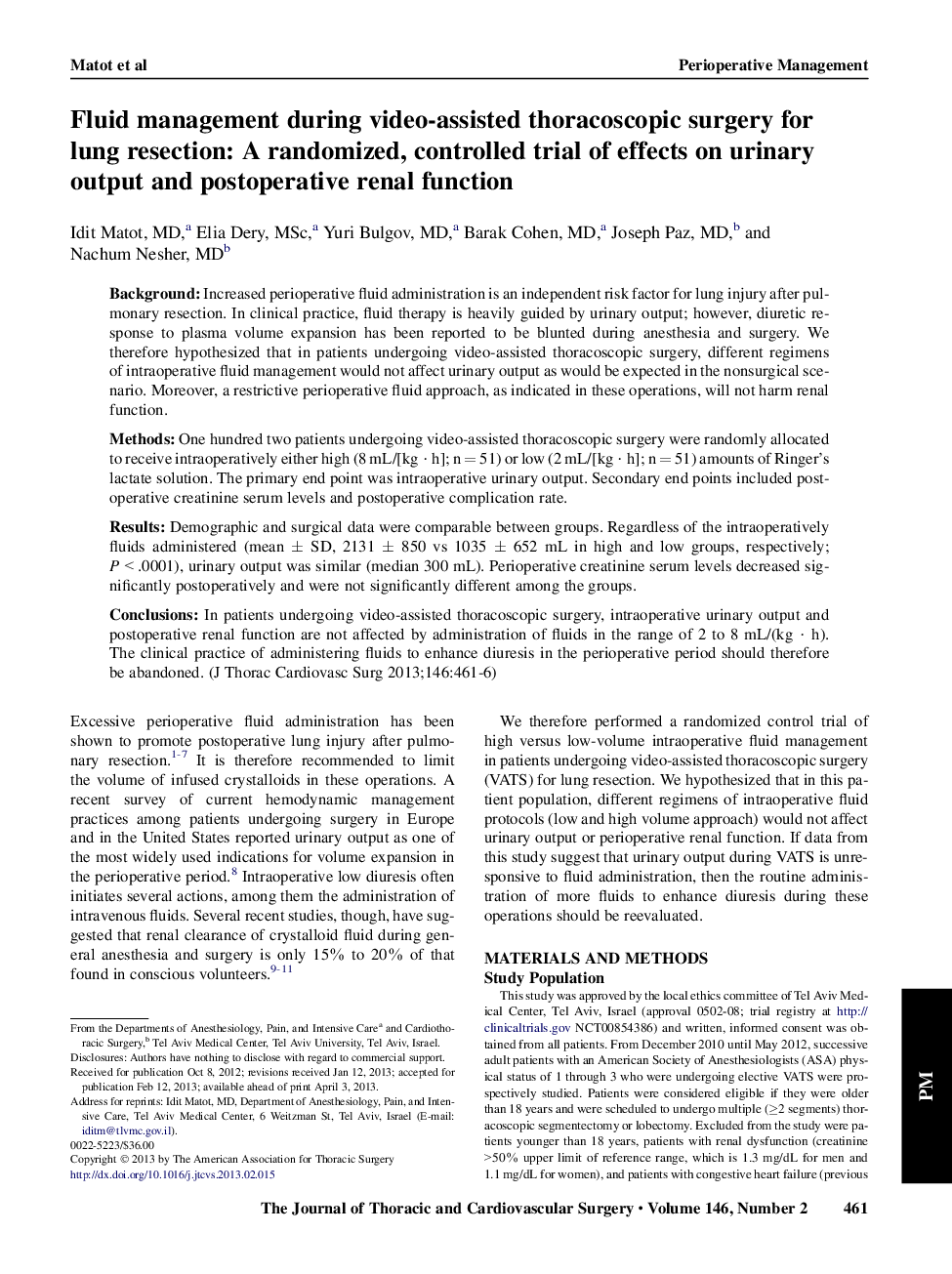| Article ID | Journal | Published Year | Pages | File Type |
|---|---|---|---|---|
| 2980935 | The Journal of Thoracic and Cardiovascular Surgery | 2013 | 6 Pages |
BackgroundIncreased perioperative fluid administration is an independent risk factor for lung injury after pulmonary resection. In clinical practice, fluid therapy is heavily guided by urinary output; however, diuretic response to plasma volume expansion has been reported to be blunted during anesthesia and surgery. We therefore hypothesized that in patients undergoing video-assisted thoracoscopic surgery, different regimens of intraoperative fluid management would not affect urinary output as would be expected in the nonsurgical scenario. Moreover, a restrictive perioperative fluid approach, as indicated in these operations, will not harm renal function.MethodsOne hundred two patients undergoing video-assisted thoracoscopic surgery were randomly allocated to receive intraoperatively either high (8 mL/[kg · h]; n = 51) or low (2 mL/[kg · h]; n = 51) amounts of Ringer's lactate solution. The primary end point was intraoperative urinary output. Secondary end points included postoperative creatinine serum levels and postoperative complication rate.ResultsDemographic and surgical data were comparable between groups. Regardless of the intraoperatively fluids administered (mean ± SD, 2131 ± 850 vs 1035 ± 652 mL in high and low groups, respectively; P < .0001), urinary output was similar (median 300 mL). Perioperative creatinine serum levels decreased significantly postoperatively and were not significantly different among the groups.ConclusionsIn patients undergoing video-assisted thoracoscopic surgery, intraoperative urinary output and postoperative renal function are not affected by administration of fluids in the range of 2 to 8 mL/(kg · h). The clinical practice of administering fluids to enhance diuresis in the perioperative period should therefore be abandoned.
